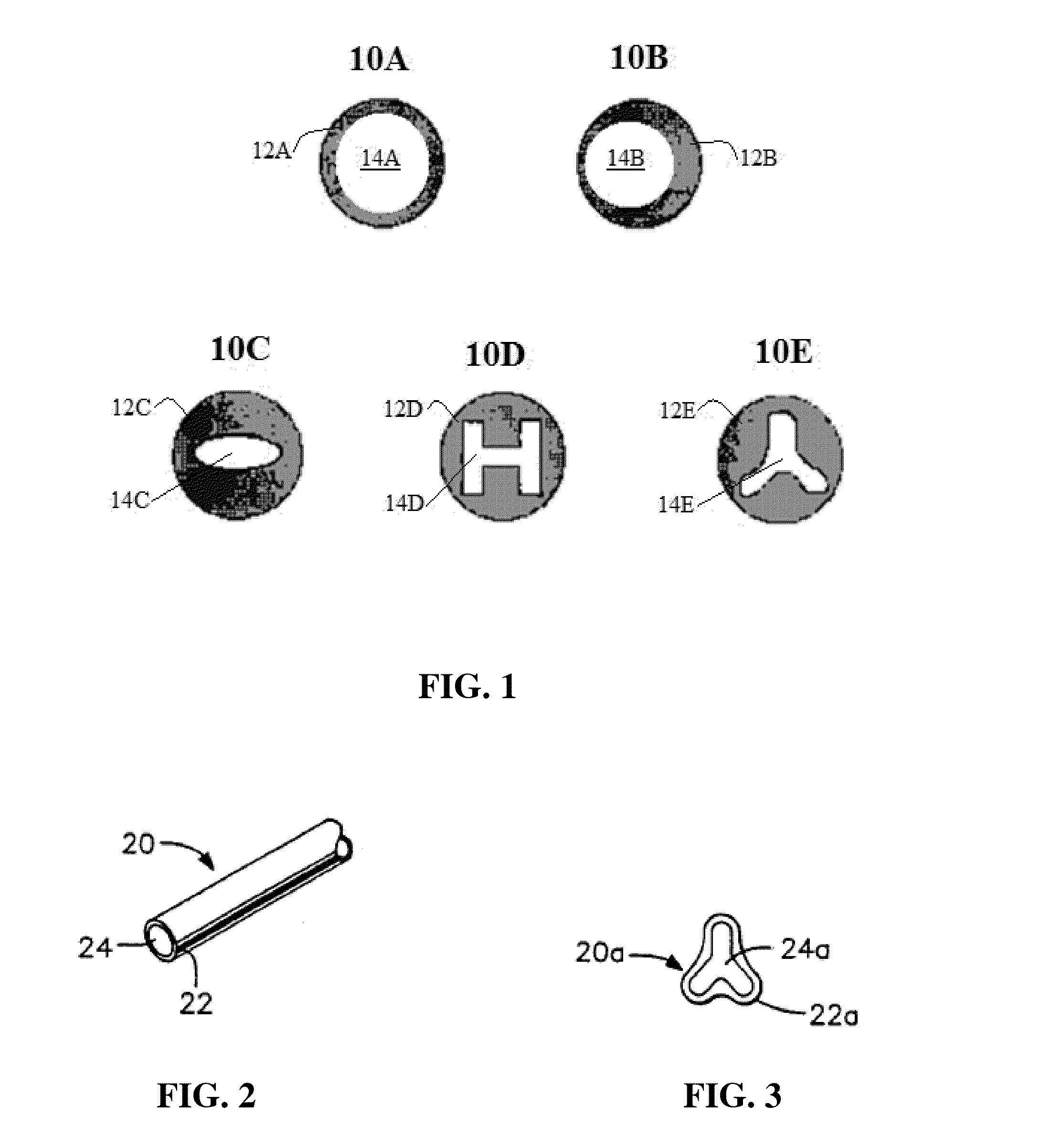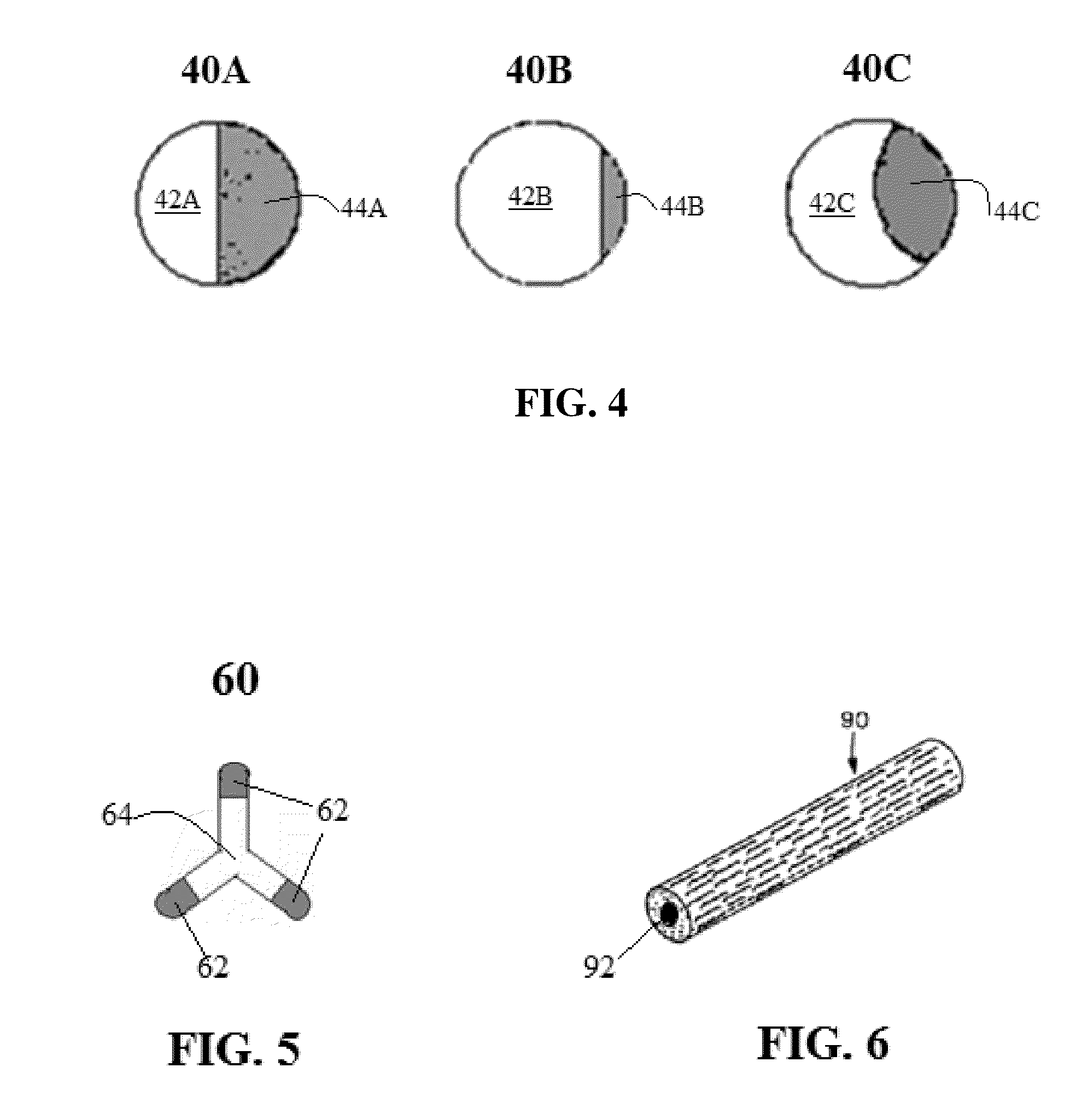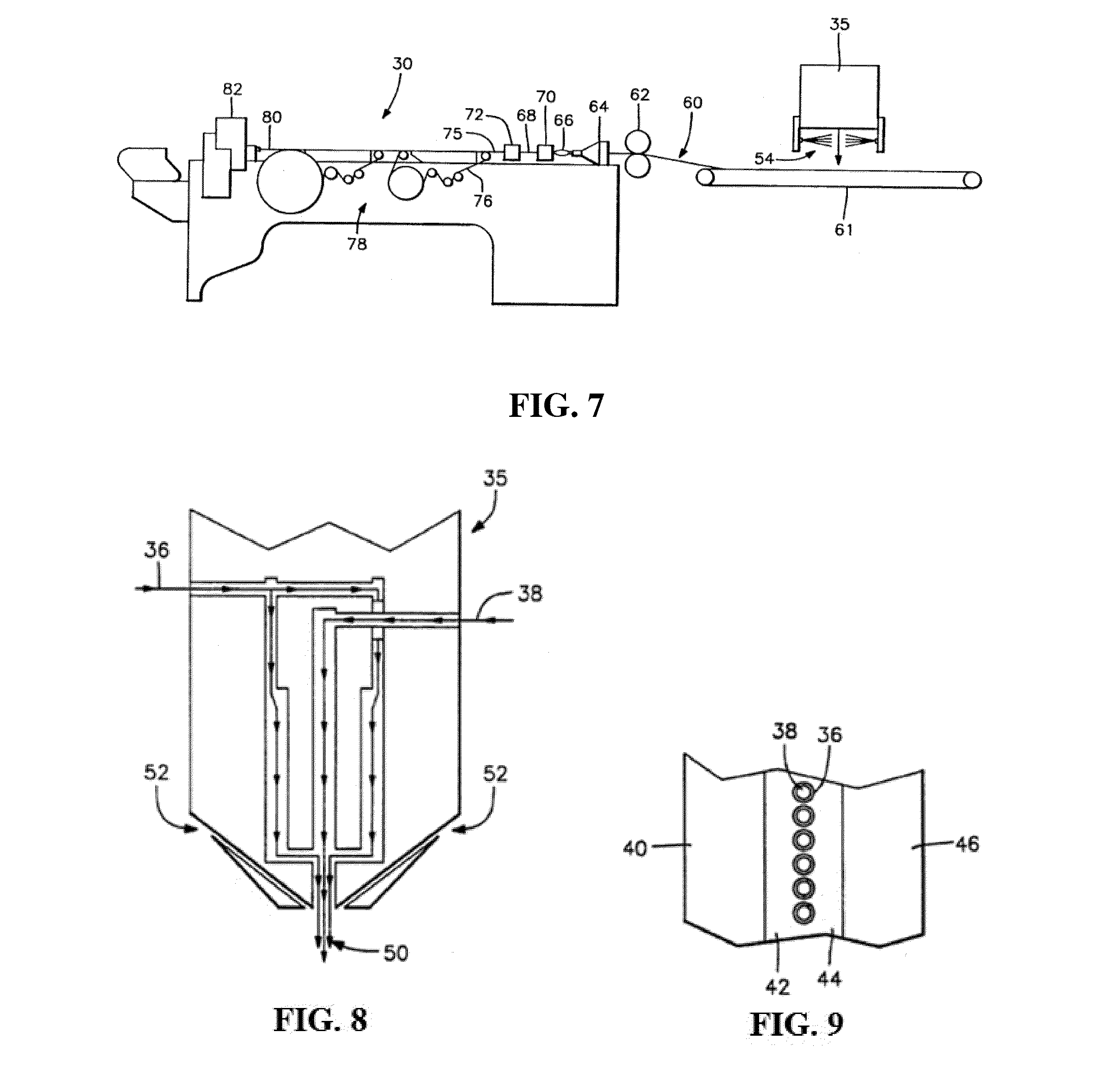Bicomponent fibers, products formed therefrom and methods of making the same
a technology of bicomponent fibers and fibers, applied in the direction of filament/thread forming, textiles and papermaking, vehicle safety arrangments, etc., can solve the problems of low stiffness of fibers, low recovery, and low stiffness of nonwoven fabrics
- Summary
- Abstract
- Description
- Claims
- Application Information
AI Technical Summary
Benefits of technology
Problems solved by technology
Method used
Image
Examples
example
[0076]Melt blown filter tubes made of monocomponent nylon 6 (polycaprolactam) fiber (“Monocomponent Fiber Matrix”) and of sheath-core bicomponent fibers (sheath: poly(m-xylene adipamide and core: nylon 6) (“Bicomponent Fiber Matrix”) were tested to compare the extent to which the fiber matrices withstood pressure through the wall thickness of the filters. Both filter tubes had the same fiber size and density. Measurements of max load (lbf) and stiffness (lbf / in) were obtained (Table 1) from an Instron physical testing machine.
[0077]To test the strength of the fiber matrices, three (3) rectangular prism samples were cut from three (3) random positions on each filter. The top of the rectangular prisms represented the outside diameter of the filter and the bottom represented the inside diameter. Each sample was tested on the Instron machine, which applied vertical force to the top surface of the rectangular prisms, or the outside of the filter, which is the same direction of fluid flow...
PUM
| Property | Measurement | Unit |
|---|---|---|
| average diameter | aaaaa | aaaaa |
| average diameter | aaaaa | aaaaa |
| average diameter | aaaaa | aaaaa |
Abstract
Description
Claims
Application Information
 Login to View More
Login to View More - R&D
- Intellectual Property
- Life Sciences
- Materials
- Tech Scout
- Unparalleled Data Quality
- Higher Quality Content
- 60% Fewer Hallucinations
Browse by: Latest US Patents, China's latest patents, Technical Efficacy Thesaurus, Application Domain, Technology Topic, Popular Technical Reports.
© 2025 PatSnap. All rights reserved.Legal|Privacy policy|Modern Slavery Act Transparency Statement|Sitemap|About US| Contact US: help@patsnap.com



